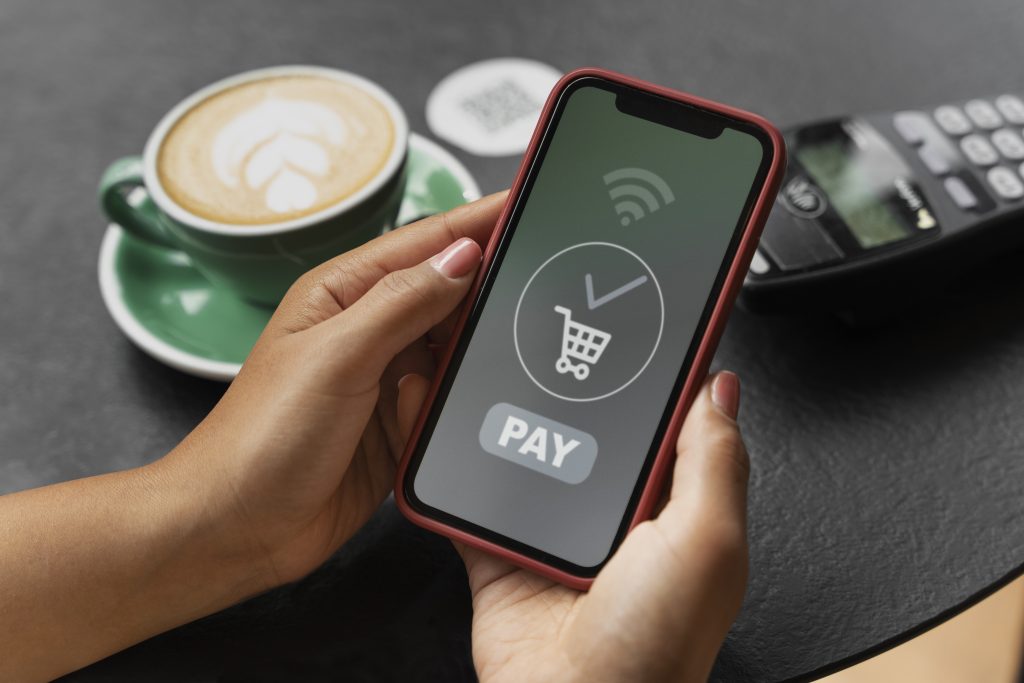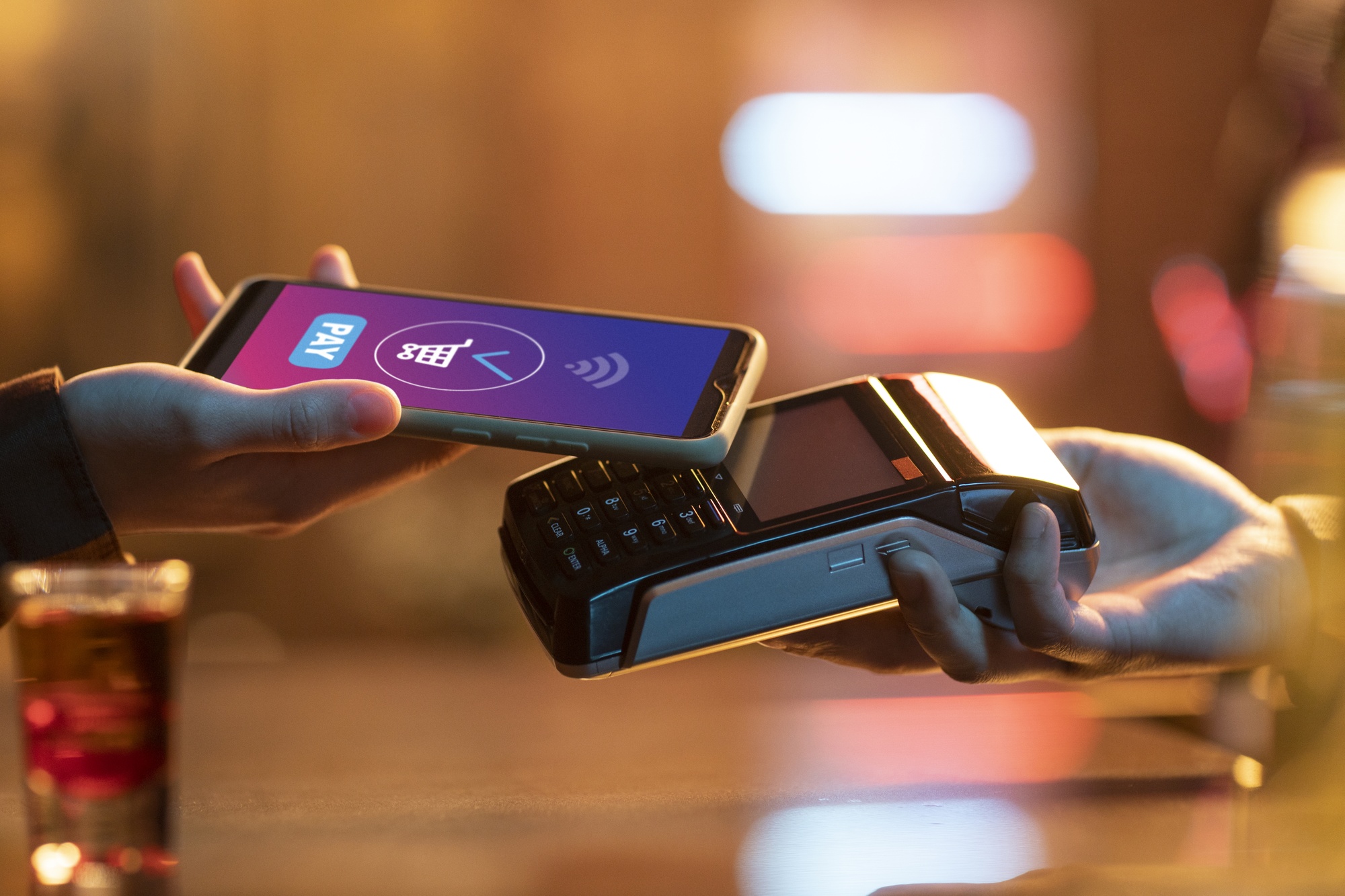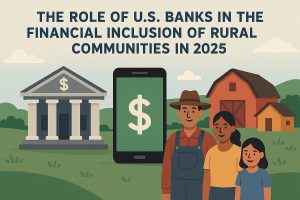In recent years, digital payments have transformed the financial landscape across the United States. With the widespread adoption of smartphones, mobile apps, and online banking solutions, consumers are increasingly choosing digital transactions over traditional methods like cash or checks. This shift in consumer behavior is not just a trend, but a major change in the way financial transactions are conducted.
For American banks, the rise of digital payments has been both a challenge and an opportunity. Banks must quickly adapt to meet the evolving needs of consumers while ensuring security, convenience, and a seamless user experience. In this article, we’ll explore how U.S. banks are responding to the growing demand for digital payments and what the future holds for this rapidly changing industry.
The surge of digital payments: a game changer for financial institutions

The surge in digital payments is revolutionizing how people handle money. From mobile wallets like Apple Pay and Google Wallet to peer-to-peer services such as Venmo and Zelle, consumers are embracing the speed and convenience that these platforms offer. These innovations have made it possible for people to complete transactions within seconds, without the need to carry cash or visit a bank.
Why digital payments are so attractive
The growing popularity of digital payments can be attributed to several key factors. First and foremost, digital transactions offer unmatched convenience, enabling users to complete payments with just a few taps on their smartphones.
Additionally, these payments are often more secure than traditional methods, thanks to features like tokenization and biometric authentication. Finally, digital payment systems allow users to send money quickly and easily, even across borders, without the delays and fees typically associated with international transfers.
How banks are adapting to the digital revolution
In response to the growing demand for digital payments, American banks are taking a variety of approaches. Some are developing their own digital payment systems, while others are partnering with fintech companies that specialize in this area. These partnerships allow banks to offer new, innovative payment options while leveraging the expertise of fintech firms.
Investing in cutting-edge technology
To meet the increasing demand for digital payments, banks are making significant investments in technology. Many large institutions, such as JPMorgan Chase and Bank of America, have launched their own mobile apps that enable users to make payments, transfer funds, and manage their accounts all from their smartphones. These apps offer a one-stop solution for customers, combining the convenience of digital payments with traditional banking services.
Expanding digital payment services
American banks are also expanding their digital payment services to meet customer demands. For example, many banks now allow customers to link their accounts to popular mobile wallets, such as PayPal and Venmo. This integration makes it easier for consumers to send and receive money from their bank accounts while enjoying the convenience of mobile payments.
Furthermore, banks are introducing innovative solutions like contactless debit and credit cards. These cards allow users to make payments by simply tapping their card on a terminal, without needing to swipe or insert the card. This technology aligns with the growing consumer preference for fast, touch-free payments and is a response to the ongoing health and safety concerns related to the COVID-19 pandemic.
The role of security in the digital payment ecosystem
As the volume of digital payments continues to rise, so does the need for robust security measures. While digital transactions are more convenient, they also pose new risks, including the threat of fraud and data breaches. Consequently, American banks are prioritizing the development of security features to protect consumers and their financial data.
Biometric authentication and encryption
To safeguard digital transactions, many banks are implementing biometric authentication, such as fingerprint scanning or facial recognition, as a way to verify users’ identities. This adds an extra layer of security, making it more difficult for unauthorized individuals to access accounts and initiate transactions. Additionally, end-to-end encryption ensures that sensitive data, such as credit card information, is protected during transactions.
Fraud prevention and real-time monitoring
Fraud prevention has become a top priority for banks, as they seek to protect consumers from fraudulent transactions. To combat this threat, banks are using advanced data analytics and machine learning to detect suspicious activity in real time. These technologies analyze transaction patterns and flag potential fraud, allowing banks to respond quickly and protect their customers.
The rise of peer-to-peer (P2P) payments
Peer-to-peer (P2P) payment platforms have emerged as one of the most popular forms of digital payments in recent years. Services like Venmo, Zelle, and Cash App allow individuals to send money to friends, family, or businesses with just a few clicks on their smartphones. These platforms are especially popular for small, everyday transactions like splitting a dinner bill or paying for a ride-sharing service.
The convenience of P2P payments
P2P payment platforms have gained widespread popularity because they offer a level of convenience that traditional payment methods cannot match. Users can send money instantly, without the need for cash, checks, or even credit cards. Furthermore, many P2P services allow users to transfer money directly from their bank accounts, making it easier to manage personal finances.
The future of digital payments: what’s next for american banks?
As digital payments continue to grow in popularity, banks must remain agile and forward-thinking to meet the needs of consumers. The future of digital payments in the U.S. is likely to be shaped by several emerging technologies, including blockchain and cryptocurrencies.
Embracing blockchain and cryptocurrencies
Blockchain technology has the potential to transform digital payments by offering a secure, transparent, and efficient way to conduct transactions. Some American banks are already exploring the use of blockchain to enhance the security and speed of payments. Additionally, cryptocurrencies like Bitcoin and Ethereum are gaining traction as alternative payment methods, with some banks considering offering cryptocurrency-related services.
Enhanced artificial intelligence and personalization
Artificial intelligence (AI) is another technology that will play a significant role in the future of digital payments. AI can help banks provide more personalized services, such as customized payment options and spending insights. By analyzing customer data, AI can offer tailored recommendations that help individuals manage their finances more effectively.
Conclusion: navigating the digital future of payments
In conclusion, American banks are embracing the rise of digital payments by investing in innovative technologies and improving security measures. These efforts are helping to create a more convenient and secure payment ecosystem that meets the evolving needs of consumers.
As digital payments continue to shape the future of banking, financial institutions must remain flexible and forward-thinking to stay ahead of the competition. The future of digital payments looks bright, with new innovations on the horizon that will further enhance the way we handle money.






